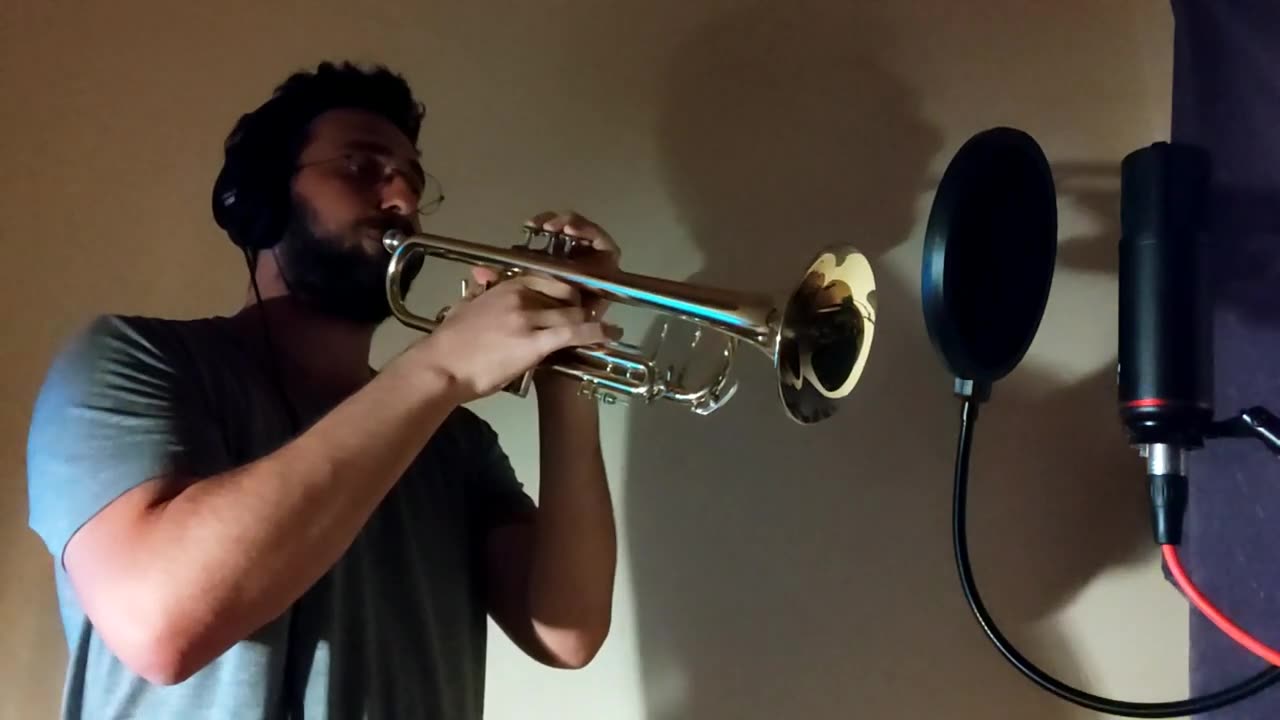Premium Only Content

Write This Down & İki Yabancı Full Cover (Keys-Bass-Drum-Trumpet)
Trumpet: The primary instrument of focus, known for its brass construction and distinct sound.
Instrumental Music: Music that is composed and performed without vocals, focusing on the musical instruments themselves.
Brass Instrument: A type of musical instrument made of brass, including the trumpet, trombone, and tuba.
Jazz: A genre that often features trumpet as a prominent instrument, known for its improvisational style and rhythmic complexity.
Classical: A genre that includes various forms of orchestral and chamber music where the trumpet is often featured in ensembles.
Orchestra: A large ensemble of musicians that typically includes trumpets, among other instruments, and performs symphonic and classical music.
Solo Performance: A musical performance featuring just the trumpet, without accompaniment or with minimal backing instruments.
Ensemble: A group of musicians playing together, which can range from small groups to large orchestras.
Sound Embouchure: The technique of shaping the lips, facial muscles, and airflow to produce different tones and notes on the trumpet.
Sheet Music: Written notation of music for the trumpet, allowing musicians to read and perform compositions.
Concerto: A musical composition usually featuring a solo instrument (such as the trumpet) accompanied by an orchestra.
Clef: A symbol at the beginning of a staff indicating the pitch of the notes; the trumpet typically uses the treble clef.
Mouthpiece: The detachable part of the trumpet that the musician blows into, affecting the sound produced.
Valves: Mechanisms on the trumpet that change the pitch by altering the length of tubing the air passes through.
Technique: The specific skills and methods required to play the trumpet effectively, including fingering, tonguing, and breath control.
Mute: A device inserted into the trumpet's bell to alter its sound, producing various effects like muffled or muted tones.
Embouchure Development: Exercises and practices aimed at improving the control and flexibility of the player's embouchure (lip muscles).
Scale: A series of notes played in ascending or descending order, often used for warm-ups and practice.
Improvisation: Creating music on the spot, a key element in genres like jazz where trumpet players often take solos.
Repertoire: The collection of music pieces that a trumpet player is proficient in performing.
-
 LIVE
LIVE
The Mel K Show
1 hour agoMORNINGS WITH MEL K - The Democratic Socialists vs The Constitutional Republic: History Tells the Story 8-5-25
719 watching -
 LIVE
LIVE
The Shannon Joy Show
1 hour ago🔥🔥Trump Thinks Sidney Sweeney Is Hot, Criticism Of Israel Is NOT. Plus The Rise Techno Fascism With Special Guest Aaron Day🔥🔥
220 watching -
 LIVE
LIVE
Grant Stinchfield
38 minutes agoAmerican Health Scandals Busted by Stinchfield, Dr. Thorp & RFK Jr.
181 watching -
 LIVE
LIVE
Trumpet Daily
53 minutes agoTrumpet Daily LIVE | Aug. 5, 2025
489 watching -
 2:02:36
2:02:36
Badlands Media
2 hours agoBadlands Daily: August 5, 2025
22.2K11 -
 1:18:04
1:18:04
The Big Mig™
5 hours agoRussia Collusion Hoax + Grand Jury + Indictments = ARRESTS
3.95K10 -
 LIVE
LIVE
LFA TV
16 hours agoLFA TV ALL DAY STREAM - TUESDAY 8/5/25
4,914 watching -
 25:13
25:13
Stephen Gardner
2 hours ago🔥Trump White House makes TWO HUGE ANNOUNCEMENTS!
9.62K36 -
 1:44:53
1:44:53
Dear America
4 hours ago🔥 DEMS ON THE RUN: Hunted, Arrested in Texas! Bondi DEMANDS Grand Jury for Russia Hoax!!
94.1K81 -
 DVR
DVR
Law&Crime
3 hours agoLIVE: Wife Dismembered Murder Trial – GA v. Nicholas Kassotis – Day 1
45.6K